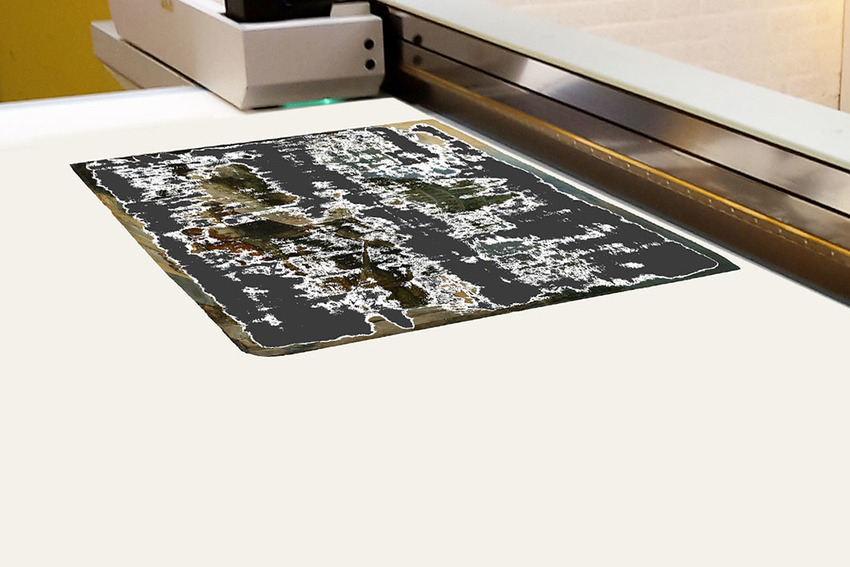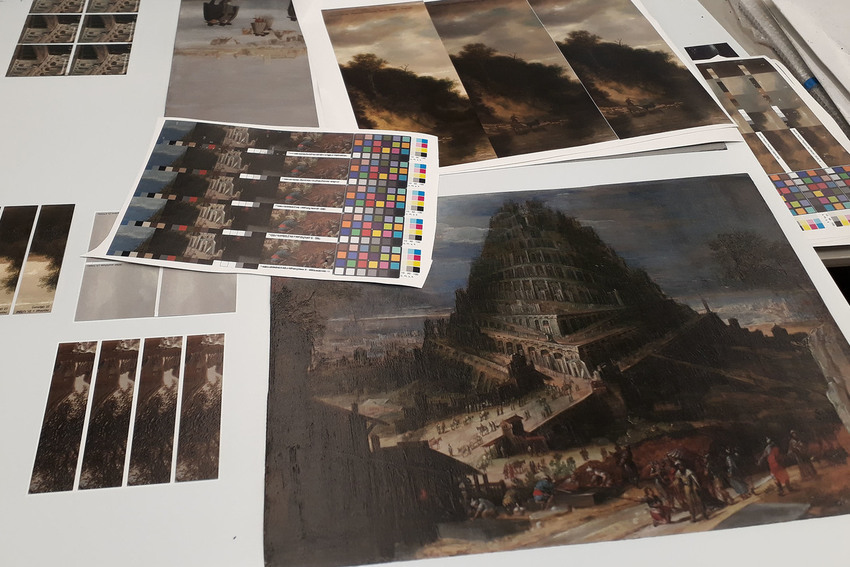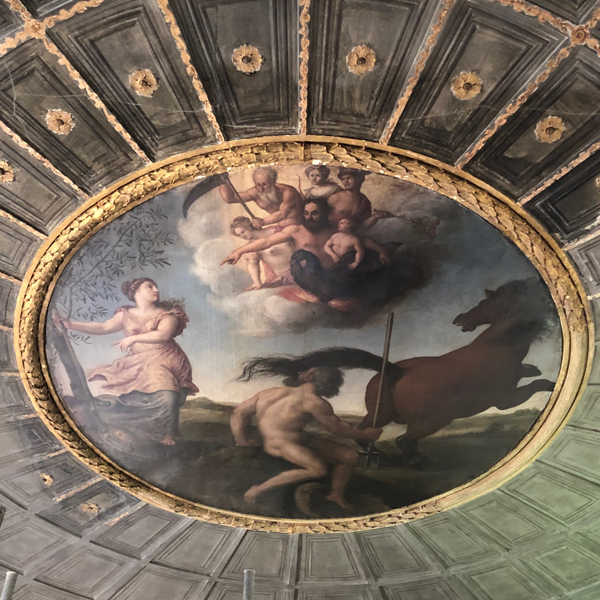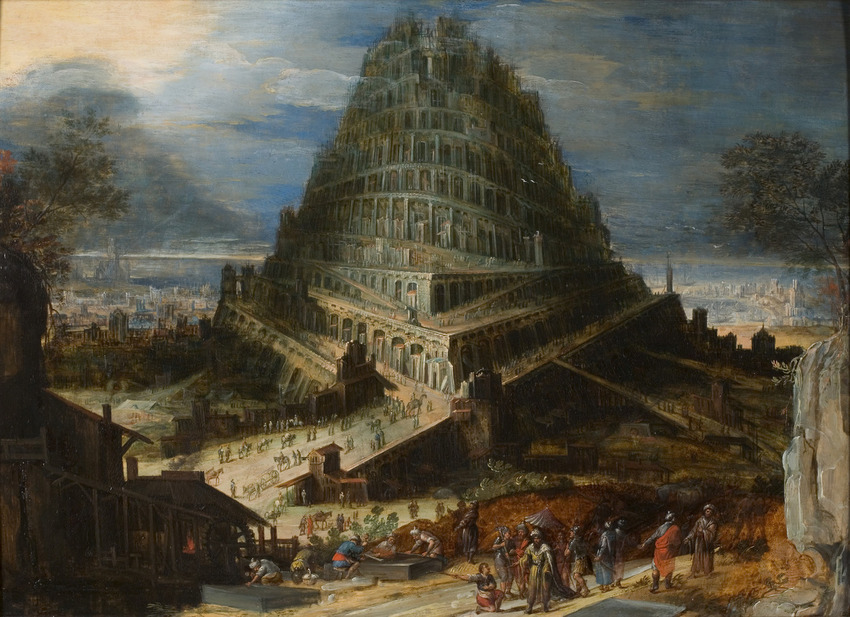
De toren van Babel (The Tower of Babel ), Hendrik van Cleve III, second half of 16th century, oil on panel, 53 x 73 cm, in the collections of the Rijksmuseum Twenthe, Enschede, on loan from the Oudheidkamer 'Riessen', Rijssen, inv. BR0001 (R439) © Rijksmuseum Twenthe
The project to record four 16th- and 17th-century Dutch paintings in the Rijksmuseum Twenthe in the Netherlands allowed replicas of the paintings made by Canon Production Printing (CPP) to take the place of the originals in the Rijssens Museum, the institution to which the paintings belong. The digitised paintings show the Tower of Babel, Skaters on the IJssel near Kampen, a Landscape with Farm, and a Steep Riverbank. This project was also an exciting step in Factum Foundation’s ongoing collaborative relationship with Canon Production Printing.
- The tower of Babel, Hendrik van Cleve III, second half of 16th century
- Skaters on the IJssel near Kampen, Barend Avercamp, third quarter of 17th century
- Landscape with Farm , Salomon van Ruysdael, third quarter of 17th century
- Steep Riverbank, Guillaume Dubois, 17th century
Recording the paintings with Elevated Printing Technology by Canon Production Printing
Factum Foundation recorded the 3D surface data for the paintings using the Lucida 3D Scanner, and the colour data using panoramic photography. The Lucida 3D Scanner, made by Manuel Franquelo in collaboration with Factum Foundation, uses two cameras to record the distortions of a laser as it passes over a low-relief surface, transforming this 3D information into a depth map which can later be used to replicate the surface’s topography. Colour is notoriously difficult to reproduce accurately using photography, but Factum Foundation has perfected the use of panoramic photography as a tool for assessing the ‘true’ colours of an artwork: we use digital tools and the human eye to compare the colours of the work’s surface with both industry-standard X-Rite ColourChecker Passports and a much larger range of Pantone swatches of known RGB/CMYK value.
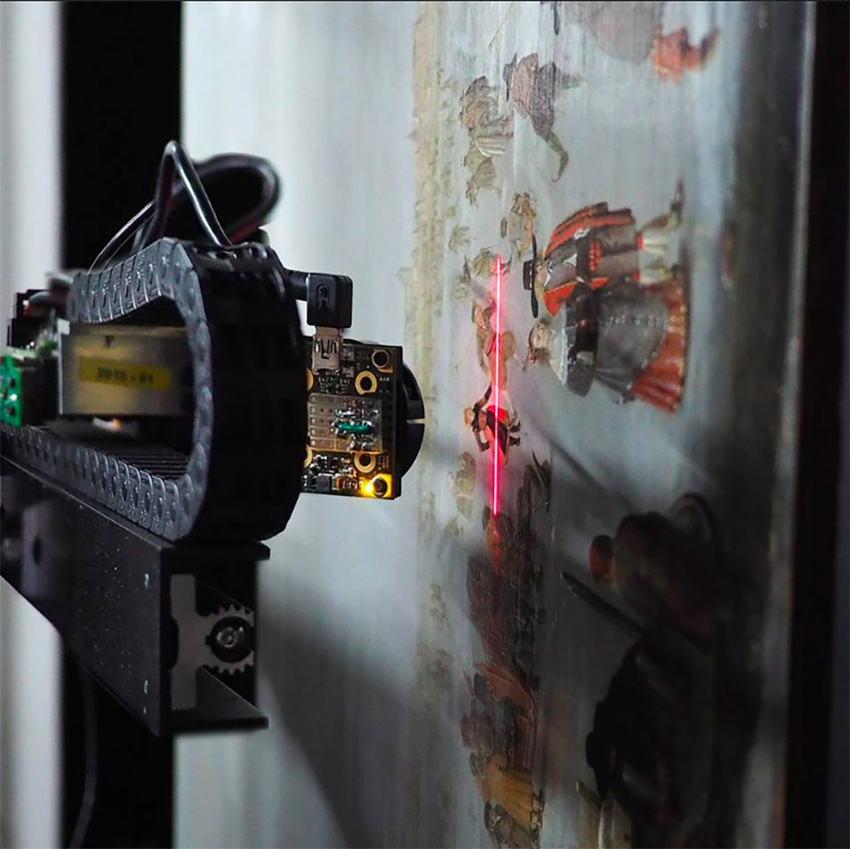
The Lucida 3D Laser Scanner digitising Skaters on the IJssel near Kampen by Barend Avercamp at the Rijksmuseum Twenthe © Rijksmuseum Twenthe
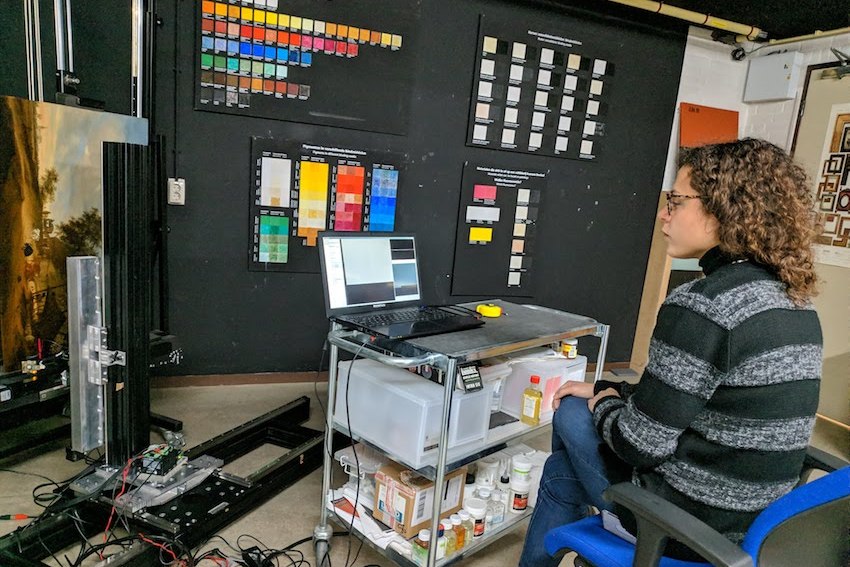
Guendalina Damone of Factum Foundation scanning Salomon van Ruysdael's Landscape with Farm © Factum Foundation
The data from the Lucida and panoramic photography recordings was processed at Factum Foundation’s Madrid studio before being sent on to Canon Production Printing in the Netherlands. The files sent by the Foundation contained the information required to precisely register the colour data to the relief data, allowing CPP to use its elevated printing technology to print out full colour reproductions of the four paintings. The data was fed into their Elevated Print Raster Imaging Processor, which created a stack of image files to be printed one on top of the other, resulting in a relief surface whose top layers reproduced the colours of the original paintings. CPP’s printer deposits pigment in layers of 2-40 µm, curing the pigment on deposition using UV light to produce relief surfaces of up to 5mm in height.
Reproducing the paintings in the Rijksmuseum Twenthe
Canon Production Printing’s elevated printing technology has in recent years played a vital role in creating the low-relief surfaces used as part of the facsimile-making process, offering higher-resolution reproduction than other fabrication methods such as CNC milling. The relationship has been mutually productive: Factum Foundation’s input has helped Canon Production Printing to push the limits of their technology, resulting in several projects which have broken new ground for both parties. The Foundation usually uses CPP’s prints for surface relief, employing its own in-house printer to replicate colour, but on two recent projects Canon Production Printing has used Factum Foundation's data to print their own colour reproductions of paintings. In December 2018 the Foundation collaborated with CPP to produce a 3D reproduction of Rembrandt’s Portrait of an Elderly Man, a painting whose original is now in the Mauritshuis, and Canon Production Printing also reproduced both colour and relief for the four paintings scanned at Twente.
Exhibiting the paintings in the Rijssens Museum
The finished reproductions will be sent to the Rijssens Museum, where they will join other objects from the Van Heel Collection, left to the museum by the jute manufacturer M.G. van Heel (1876-1950). While the collection has been under the guardianship of the Rijksmuseum Twenthe since the bequest was made, a new initiative has seen many of the objects left by van Heel exhibited as part of the permanent display in the Rijssens Museum. The reproductions made by Canon Production Printing with Factum Foundation's data will set the pace for more vital parts of this puzzle to be fitted into place.

